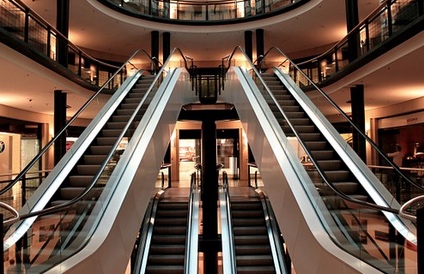All business has to respond to change. For the retail sector they have to cope with annual changes in fashion and at least in northern Europe the weather. Structural changes in shopping habits and property have moved much of the consumer activity from the high street to out of town shopping centres but now digital disruption is creating a huge challenge for the sector. Traditional store portfolios with large fixed costs associated with long leases on property are no longer as attractive. The competitive landscape is changing with competition from the likes of Amazon, who with huge buying power puts deflationary pressure on prices. Many traditional retailers are suffering and struggling to refine their business model to cope with these challenges in an overall weak environment where overall fashion retail is barely growing.
As is often the case challenges also present opportunities reflected here in market share changes. Location of sales outlets remains an important selling point but now the location includes websites and social media. This has profound implications for capital allocation, stock control, supply chain logistics, brand, advertising and promotion and most aspects of the business. Many of the key elements of success – a clear identity with customers and a value proposition remain important but these now have to be fused with a digital offer and the logistics to support this distribution channel. For many this means a radical change in the store portfolio to fewer larger flagship stores and less small stores. The impulse purchase once made via the store on the way home can now be made as easily by flicking through the web on a smartphone on the train home.
Several European businesses have taken advantage of these changes to boost their own position and find new areas of growth. Inditex is a successful traditional retail company headquartered in Spain, offering affordable fashion that has adapted while keeping several distinctive aspects. Unlike many who focus extensively on cost in the supply chain, Inditex has sacrificed some cost for proximity of supply and with that faster turnaround times to respond to fashion changes. This model results in fewer discounts, faster moving lines, as well as a good combination of central information, control and local store manager autonomy. They have extended this to the internet and integration with the physical store portfolio in the way they have incentivised staff and collection options for customers. Having taken their time to consider and launch their digital offering, they can now reduce investment in physical stores and with that capital intensity while still driving top line growth.
Zalando is a new challenger, based in Germany, created for the digital age. They grasped the importance of logistics and a scalable platform to create the network effect so common with digital offers. Their offer is all via the web and they host others’ products where they can literally deliver both the products and the shop windows in a better manner than many established brands. According to Zalando, they can deliver to over 80% of Europe within two days. For a sector with little overall growth they are growing sales in excess of 20% pa.
In Germany, Deutsche Poste has grown out of the postal service in the country into a broad logistics and delivery company. The mix of businesses face challenges – most obviously traditional delivery of letters is in decline but they also deliver parcels and have a strong infrastructure to do so. All these internet purchases have to find their way to the end consumer and this offers a solidly growing business that is strong enough in their own territory to compete with Amazon.
Companies are the place where we see adoption of new technology and techniques to run their business and to meet customer needs and wants. They have to adopt and change to survive but this remains part of the life blood of a growing dynamic economy.
Column by Stan Pearson, Head of European Equities, Standard Life Investments





 For Fórmate a Fondo
For Fórmate a Fondo